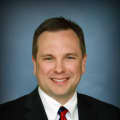If non-surgical treatment methods have been ineffective at managing the patient’s degenerative scoliosis, surgery may be considered.
In This Article:
- All About Degenerative Scoliosis
- Degenerative Scoliosis Symptoms and Diagnosis
- Treatment for Degenerative Scoliosis
- Surgery for Degenerative Scoliosis
- Degenerative Scoliosis Video
Reasons to Choose Degenerative Scoliosis Surgery
When degenerative scoliosis surgery is recommended by a surgeon, it tends to be for one or both of the following reasons:
- Maintain nerve function. If the spinal cord or nerve roots become irritated, such as from narrowing of the spinal canal or foramen, then surgery may be required to prevent the loss of body functions, such as walking or bladder/bowel control.
- Alleviate excruciating pain. Sometimes a patient’s severe pain from degenerative scoliosis cannot be managed with non-surgical treatments, in which case surgery may be the last considered for pain relief.
While rare, sometimes a degenerative scoliosis curve reaches 50 degrees and is, therefore likely to keep progressing into a severe curve. A scoliosis curve that keeps worsening can cause balance problems as well as cardiopulmonary complications in addition to more pain and a noticeable deformity. However, it is generally not recommended to have scoliosis surgery for cosmetic reasons alone.
Surgical Options
Lumbar laminectomy relieves neural compression by removing the bone compressing the nerve tissue.
The surgical options for degenerative scoliosis tend to fall into two general categories:
- Decompression surgery (e.g. lumbar laminectomy). This type of surgery involves removing part of a vertebra and possibly other spinal elements to relieve pressure on a nerve root and/or the spinal cord. For degenerative scoliosis, this surgical option is rarely performed without also including a spinal fusion. However, sometimes circumstances warrant decompression surgery without adding the fusion. One example would be when a frail, older patient needs immediate relief for the spinal cord or nerve root but would not tolerate major surgery well.
- Decompression with fusion surgery. More commonly, the decompression surgery mentioned above is combined with a fusion. This is often necessary as a decompression alone in the setting of a scoliosis curvature, could cause the spine to become more unstable and cause the curvature to worsen. The fusion could be long (span much of the back) or short (fuse only one or two vertebral levels). If scoliosis is severe, a long fusion is often needed in order to stabilize the spine and provide at least some correction of the curve. The short fusion could be an option for a more moderate scoliosis.
A fusion refers to fusing the bones together of multiple spine segments to create a stable spine. It often requires implants of various types to maintain the stability while the body heals, or fuses, the bones together, which often takes months. Implants commonly used are called cages, screws, or rods.
Each of the above surgical options can be performed in various ways. For instance, fusion surgeries are usually done with the surgeon entering through the back (posterior approach), but in some cases they can be done by going through the front (anterior approach) or the side (lateral approach) or as a combination of approaches. In addition, a fusion surgery is sometimes done without decompression.
See Posterior Lumbar Interbody Fusion (PLIF) Surgery and Anterior Lumbar Interbody Fusion (ALIF) Surgery
In rare cases when a degenerative scoliosis surgery is expected to take more than 8 hours, the surgeon will schedule the first part of the surgery on one day and the second part a few days later.
Age-Related Conditions Are Considerations for Surgery

Surgery is not recommended in conditions like osteoporosis due to compromised bone integrity.
All surgeries have at least some risk, such as with bleeding or infection. However, the population of people who might be considering degenerative scoliosis surgery trends older—60s, 70s, or even 80s—so the risks associated with this surgery tend to be higher.
In this age group, people are more likely to have other medical considerations in addition to the scoliosis, such as diabetes, osteoporosis, heart disease, or other conditions related to aging.
If someone has osteoporosis, for instance, there is less chance for a fusion to successfully take hold in the already-weakened bones. As another example, a person with kidney disease would have increased risks for complications during surgery or having a delayed recovery. In cases such as these, the patient might not be a candidate for degenerative scoliosis surgery simply because the potential benefits do not outweigh the risks. Overall there are many details to consider when diagnosing and treating degenerative scoliosis and it is recommended to obtain the opinion of a spine surgeon or other professional to review your options.

